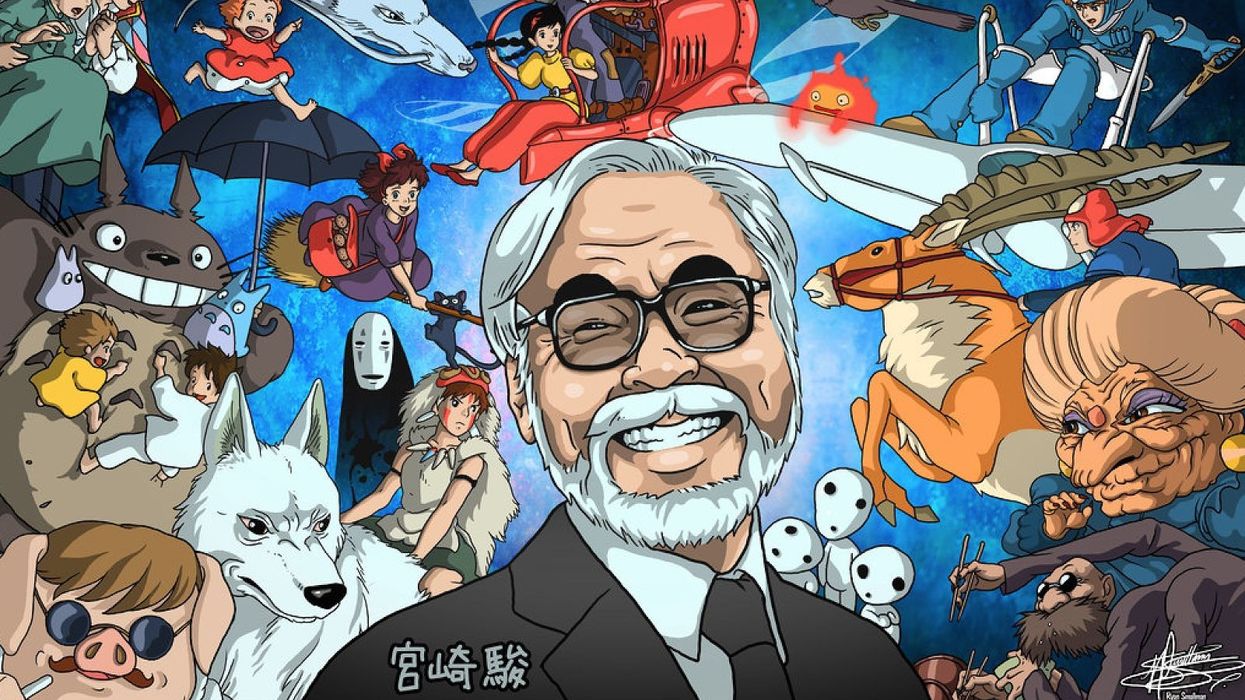The Tokyo-born filmmaker, the 'Master of Ma', has has garnered the respect and admiration of not only fans of his work, but of his fellow artists in the medium. Much of this is due to his unflinching dedication to providing quality animation and storytelling that focuses primarily on emotional themes, something that is often challenging for, and therefore avoided by filmmakers working in animation.
So, what is it about Miyazaki's films that has managed to capture the hearts and imaginations of audiences for over 40 years? In this video essay, Lewis Bond takes a long look at what makes a Miyazaki film unique, including the balance between fantasy and realism, the beautiful landscapes, and the overarching empathy that seems to capture the "essence of humanity".
So, what sets Miyazaki apart from other filmmakers in animation?
Empathy
If you know nothing about Miyazaki's films, one word can be used to describe them: empathetic. This is the one thing that truly sets his work apart from other animated films, because the tradition of this genre, particularly in the West, is to talk down to its young audience, to simplify themes to the point where the story becomes a lesson in a black-and-white morality -- good vs. evil. Miyazaki addresses the complexities of the human condition -- the gray. In his films, no one is all good or all evil; his protagonists and heroes have major moral flaws and his antagonists have major virtues. This allows audiences to relate to characters regardless of which "side" they're on, which fosters an environment where empathy can bloom.
Realism
For Miyazaki, exploring the emotional element of humanity has always been the basis of his storytelling, but the vehicle he uses to communicate complex emotionality is realism. Despite the often fantastical environments his characters find themselves in, his characters experience life the way we all do -- we complete tedious tasks (Chihiro scrubbing the baths in Spirited Away), we wait (Mei and Satsuki waiting for the bus with Totoro in My Neighbor Totoro), and we meticulously make meals (Sophie in Howl's Moving Castle). The key to his realism, however, isn't in the actions depicted on screen, but the way they're depicted on screen, complete with attention to detail and human idiosyncrasies. It makes these characters complicated, unique, particular -- human.

"Ma"
Miyazaki's work is full of a little something special -- something that is difficult to explain -- it's a kind of silence, a certain lack of action -- something -- "extra". He explained it during an interview with the late Roger Ebert:
We have a word for that in Japanese. It's called ma. Emptiness. It's there intentionally. [claps his hands] The time in between my clapping is ma. If you just have non-stop action with no breathing space at all, it's just busyness. but if you take a moment, then the tension building in the film can grow into a wider dimension. If you just have constant tension at 80 degrees all the time you just get numb.
We're used to watching films with plenty of action, and this is not relegated to action films. Characters are always moving, always doing something, always pushing the plot forward by completing a series of tasks. However, Miyazaki wants his audience to soak in the moment, to take the time to feel the emotion of a particular scene -- so, he'll have a character wait at a bus stop or take a moment to reflect by a crackling fire, because even though "nothing's happening" physically, there's a lot going on emotionally, and that's the entire point of Miyazaki's films.
Source: Channel Criswell













